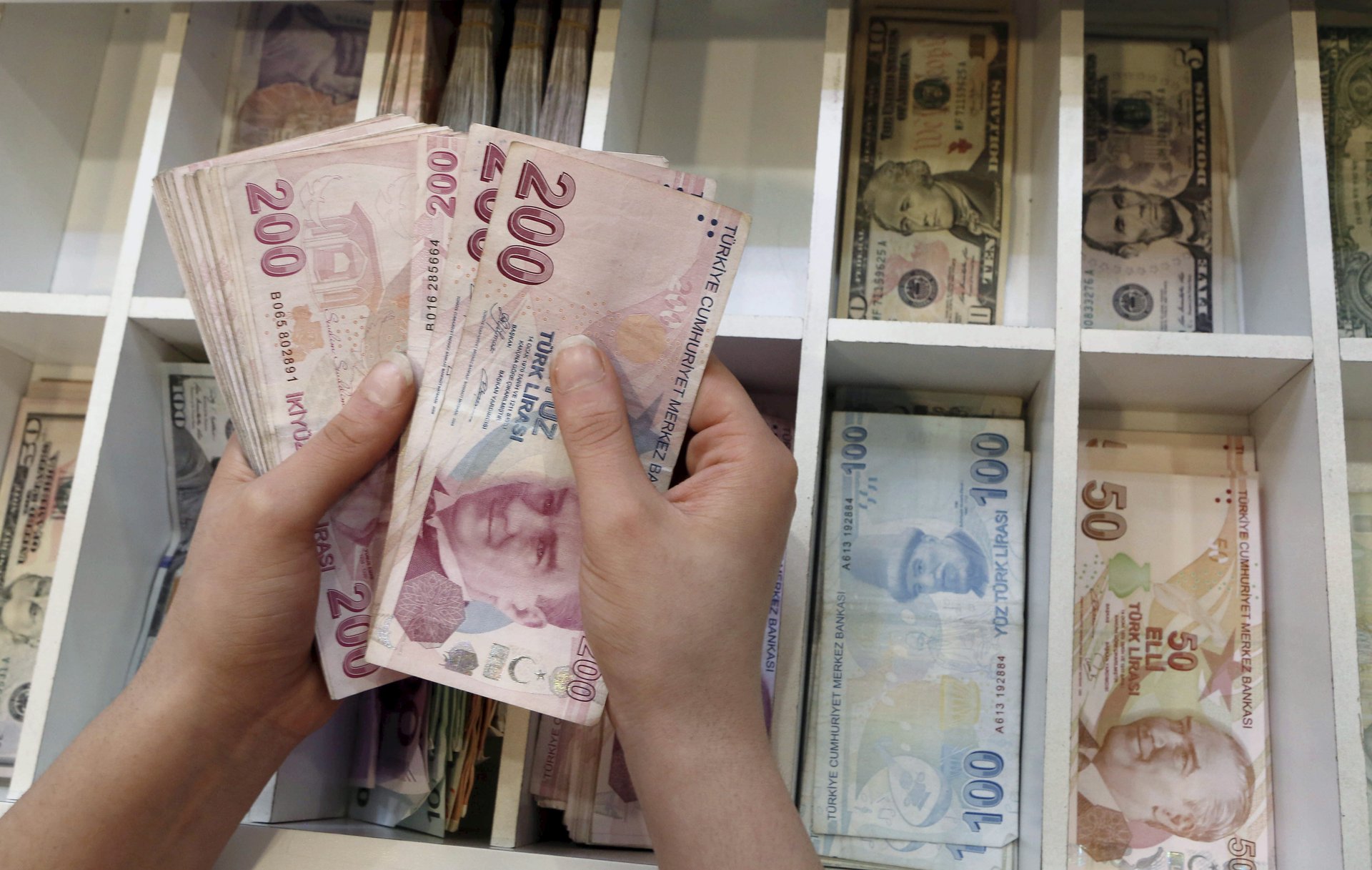These are the countries with the most to lose from Turkey’s currency crisis
After losing more than half its value against the dollar since the beginning of 2018, the Turkish lira is finally enjoying a patch of relative calm. But even in the unlikely event that the lira has hit bottom, it’s still a huge problem for the country’s economy.


After losing more than half its value against the dollar since the beginning of 2018, the Turkish lira is finally enjoying a patch of relative calm. But even in the unlikely event that the lira has hit bottom, it’s still a huge problem for the country’s economy.
Foreign-currency debt is one of the big reasons why. In the last decade or so, Turkey took out many tens of billions of loans in dollars and euros, taking advantage of the low interest rates in the US and the euro zone. Yet most of those borrowers operate domestically—meaning they’re paid in lira. As investors have pulled their money out of Turkey, the lira has nosedived.
The 40% or so the lira has lost against both the dollar and the euro has made loans borrowed in those currencies around 40% more expensive to pay back. And if the lira sheds even more value, those debts will become more expensive still. As of March 2018, Turkey owed around $246 billion, based on the latest Bank for International Settlements data—around two-thirds of which is in foreign currencies.
This is potentially a big problem for banks on the other side of the ledger. And as you can see, one country in particular has been especially gung-ho with Turkey credit.
What’s up with Spain’s Anatolian loan bonanza? Those seemingly out-of-nowhere spikes in outstanding debt are a useful clue.
It was in 2011 that BBVA, Spain’s second-biggest bank, took a stake in Turkiye Garanti Bankasi, the largest lender in Turkey. In November 2014, BBVA grabbed another big share (paywall). After Turkey’s 2016 failed coup attempt, most foreign lenders pulled back on credit. Not BBVA; in early 2017, it upped its stake in Garanti yet again.
Since it doesn’t break out the types of loans, the chart above makes Spain’s exposure look a bit scarier than it actually might be. Yes, Turkish residents owe Spanish banks about $80 billion. But again, the debt most at risk in a currency crisis is that which is borrowed in foreign currency. BBVA’s head-long leap into Turkish banking has left Spain exposed slightly more to lira debt than to credit issued in dollars, euros, or other foreign currency.
So how does Spain’s $35-billion exposure to Turkish foreign-currency debt stack up against that of other nations?
French banks are up there, with a $20 billion worth of foreign currencies lent to Turkey. Lenders in Italy, the US, the UK, and Japan are in the mix too. But Spain’s banking sector still has more skin in the game than that of any other country.